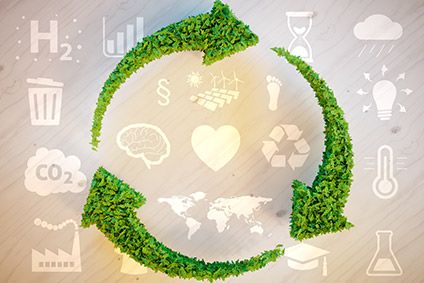
The European Commission has unveiled a “circular economy” initiative that could see the bloc’s clothing and textile manufacturers and importers face strict environmental rules aimed at cleaning up production.
The Circular Economy Action Plan – one of the main building blocks of the European Green Deal – addresses some of the product groups with the largest environmental footprints, including textiles. Other industries include electronics, construction, packaging, and automotives.
The aim, the Commission says, is to make the economy “fit for a green future”, strengthen Europe’s competitiveness while protecting the environment and giving new rights to consumers.
The new plan focuses on the design and production for a circular economy, with the aim of ensuring products placed on the EU market last longer, are easier to reuse, repair and recycle, and incorporate as much as possible recycled material instead of primary raw material.
For the textile sector, the Commission is proposing a new strategy to “strengthen competitiveness and innovation” in the industry and boost the EU market for textile reuse.
Textiles are the fourth highest-pressure category for the use of primary raw materials and water, and fifth for greenhouse gas emissions, according to the Commission. The new strategy is designed to support new consumption patterns and business models. Guidance will also be provided on separate collection of textile waste, which member states have to ensure by 2025.

US Tariffs are shifting - will you react or anticipate?
Don’t let policy changes catch you off guard. Stay proactive with real-time data and expert analysis.
By GlobalDataThe Commission says it will work with the industry and market actors to identify “bottlenecks in circularity” for textiles and stimulate market innovation.
“We only have one Planet Earth, and yet by 2050 we will be consuming as if we had three,” says commissioner for the environment, oceans and fisheries, Virginijus Sinkevicius. “The new Plan will make circularity the mainstream in our lives and speed up the green transition of our economy. We offer decisive action to change the top of the sustainability chain – product design. Future-oriented actions will create business and job opportunities, give new rights to European consumers, harness innovation and digitalisation and, just like nature, make sure that nothing is wasted.”
The Commission adds the plan and the initiatives will be developed with the close involvement of the business and stakeholder community. But it is understood the measures will need to be agreed by member states and MEPs.
It follows on from the announcement of a ‘Green Deal’ in December, which set a roadmap for a climate-neutral continent by 2050 and encompasses a range of actions supporting circularity and sustainability.
Green group, the European Environmental Bureau (EEB) describes the Plan as “the most ambitious and comprehensive proposal ever put forward to reduce the environmental and climate impact of our products and economic activities”.
Yet is says that despite the introduction of a goal to double the share of secondary materials in the economy by 2030, no target has been set for reducing resource use and its impacts in absolute terms. Waste prevention targets for businesses and industries are also missing, it says.
“The Circular Economy Action Plan can be a turning point for sustainability and climate action in Europe, which will hopefully inspire the rest of the world,” says Stephane Arditi, the EEB policy manager for the circular economy. “It shows that the systemic change the people and the planet need is within reach. Now the EU institutions and governments need to turn these promises into laws to ensure the absolute reduction in carbon emissions and resource use.”
In terms of its international reach, the action plan proposes the launch of a Global Circular Economy Alliance to explore the definition of a ‘Safe Operating Space’, kick-starting a discussion on a possible international agreement on the “management of natural resources”.
Monitoring has also been taken into consideration. In 2021 the Commission plans to update the existing monitoring framework with indicators related to the current action plan and reflecting “the interlinkages between circularity, climate neutrality and the zero pollution ambition”. Indicators on resource use, including consumption and material footprints will also be further developed.




